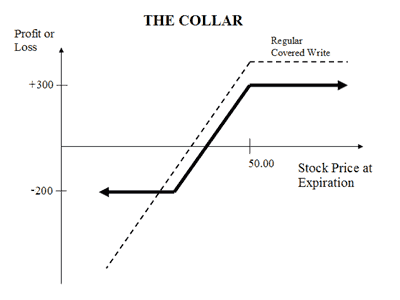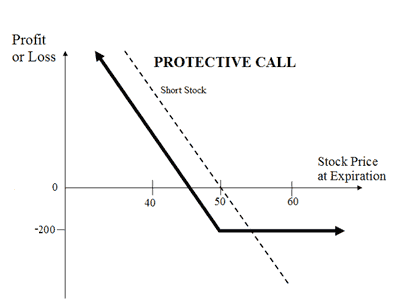 Zerodha (Trading Account)
Zerodha (Trading Account)
FREE Equity Delivery and MF
Flat ₹20/trade Intra-day/F&O
 Zerodha (Trading Account)
Zerodha (Trading Account)
FREE Equity Delivery and MF
Flat ₹20/trade Intra-day/F&O

|
|
Compare Collar and Protective Call (Synthetic Long Put) options trading strategies. Find similarities and differences between Collar and Protective Call (Synthetic Long Put) strategies. Find the best options trading strategy for your trading needs.
| Collar | Protective Call (Synthetic Long Put) | |
|---|---|---|
 |
 |
|
| About Strategy | A Collar is similar to Covered Call but involves another position of buying a Put Option to cover the fall in the price of the underlying. It involves buying an ATM Put Option & selling an OTM Call Option of the underlying asset. It is a low risk strategy since the Put Option minimizes the downside risk. However, the rewards are also limited and is perfect for conservatively Bullish market view. Suppose you are holding shares of SBI currently trading at Rs 250. You can deploy a collar strategy by selling a Call Option of strike price Rs 300 while at the same time purchasing a Rs 200 strike price Put option. If the price rises to Rs 300, your benefit from increase in value of your holdings and you will lose net premiums. If the price falls... Read More | The Protective Call strategy is a hedging strategy. In this strategy, a trader shorts position in the underlying asset (sell shares or sell futures) and buys an ATM Call Option to cover against the rise in the price of the underlying. This strategy is opposite of the Synthetic Call strategy. It is used when the trader is bearish on the underlying asset and would like to protect 'rise in the price' of the underlying asset. The risk is limited in the strategy while the rewards are unlimited. How to use a Protective Call trading strategy? The usual Protective Call Strategy looks like as below for State Bank of India (SBI) Shares which are currently traded at Rs 275 (SBI Spot Price): Protective Call Orders - SBI Stock Orde... Read More |
| Market View | Bullish | Bearish |
| Strategy Level | Advance | Beginners |
| Options Type | Call + Put + Underlying | Call + Underlying |
| Number of Positions | 3 | 2 |
| Risk Profile | Limited | Limited |
| Reward Profile | Limited | Unlimited |
| Breakeven Point | Price of Features - Call Premium + Put Premium | Underlying Price - Call Premium |
| Collar | Protective Call (Synthetic Long Put) | |
|---|---|---|
| When to use? | The Collar strategy is perfect if you're Bullish for the underlying you're holding but are concerned with risk and want to protect your losses. |
The Protective Call option strategy is used when you are bearish in market view and want to short shares to benefit from it. The strategy minimizes your risk in the event of prime movements going against your expectations. |
| Market View | Bullish When you are of the view that the price of the underlying will move up but also want to protect the downside. |
Bearish When you are bearish on the underlying but want to protect the upside. |
| Action |
|
|
| Breakeven Point | Price of Features - Call Premium + Put Premium |
Underlying Price - Call Premium When the price of the underlying is equal to the total of the sale price of the underlying and premium paid. |
| Collar | Protective Call (Synthetic Long Put) | |
|---|---|---|
| Risks | Limited You will incur maximum losses when price of the underlying is less than the strike price of the Put Option. Max Loss = Purchase Price of Underlying - Strike Price of Long Put - Net Premium Received |
Limited The maximum loss is limited to the premium paid for buying the Call option. It occurs when the price of the underlying is less than the strike price of Call Option. Maximum Loss = Call Strike Price - Sale Price of Underlying + Premium Paid |
| Rewards | Limited You will incur maximum profit when price of underlying is greater than the strike price of call option. Max Profit = Strike Price of Short Call - Purchase Price of Underlying + Net Premium Received |
Unlimited The maximum profit is unlimited in this strategy. The profit is dependent on the sale price of the underlying. Profit = Sale Price of Underlying - Price of Underlying - Premium Paid |
| Maximum Profit Scenario | Underlying goes up and Call option exercised |
Underlying goes down and Option not exercised |
| Maximum Loss Scenario | Underlying goes down and Put option exercised |
Underlying goes down and Option exercised |
| Collar | Protective Call (Synthetic Long Put) | |
|---|---|---|
| Advantages | It protects the losses on underlying asset. |
Minimizes the risk when entering into a short position while keeping the profit potential limited. |
| Disadvantage | The profit is limited |
Premium paid for Call Option may eat into your profits. |
| Simillar Strategies | Covered Put Bull, Call Spread, Bull Put Spread | Long Put |

Add a public comment...

FREE Intraday Trading (Eq, F&O)
Flat ₹20 Per Trade in F&O
|
|